The gardener sprinkles trees fall in vitriol (ferrous sulfate) for preventive and therapeutic purposes. The drug is released in the form of small crystals or green powder. You can purchase it at a hardware store. The nominal packaging volume is 250 g. Iron sulfate grade I is suitable for spraying. Mass fraction of sulfate in it is 53%.
Content
Fields of application
The drug is used in the garden in the fall for the treatment and prevention of diseases. Green crystals or powder dissolves quickly in water. The resulting solution is used immediately after preparation, otherwise the level of concentration of the active substance decreases. Botanists recommend 1-3 sprinkling of green spaces to solve the following problems:
- whitewashing the trunk;
- spotting;
- pest prevention;
- prevention of grape diseases;
- introduction of missing iron into the soil;
- treatment of diseases: scab, powdery mildew, anthracnose, gray rot and so on;
- elimination of mechanical damage;
- restoration of bark on old trees;
- elimination of fungus in the greenhouse or at home;
- disposal of fungus in the conditions of storage of vegetables.
Processing is carried out after the leaves have fallen or have not yet appeared. Iron sulfate is a substance with a high level of acidity. During processing, make sure that it does not fall on the leaves.
Positive and negative sides
The gardener conducts spring and autumn processing of green spaces using iron sulfate for several reasons. The first is the low cost of the drug. The second is the presence of a large number of advantages.
| Advantages | disadvantages |
| A wide range of applications. | Apply only at a time when there are no leaves on the tree. |
| They process almost all cultures. | Almost useless in the fight against insects. |
| It has an effect only on the external elements of the plant. | Even slight rain will wash it off the branches. |
| Does not penetrate inside. | After treatment, at least 24 hours must pass for the drug to work. |
| Destroys almost all fungal infections. | |
| The minimum level of toxicity. |
The main disadvantage is that immediately after use, the remaining solution is discarded. A few hours after preparation, the mixture loses its preventive and therapeutic properties.
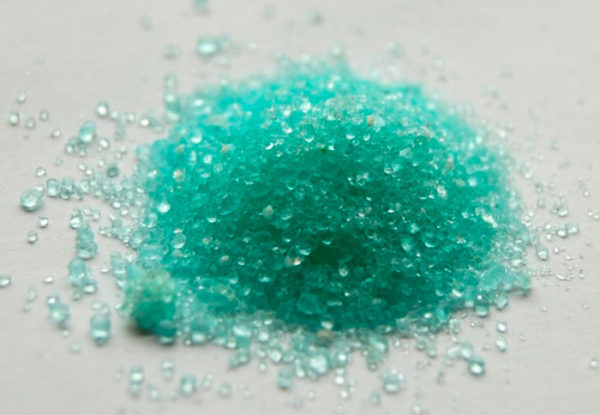
The rules for preparing the solution
For work take enameled, plastic or glass containers. Other options are not allowed. The second rule - before spraying garden trees, inspect a package of sulphate of iron. Crystals of iron sulfate should not stick together. Otherwise, the processing efficiency is reduced. The concentration level is chosen taking into account the final purpose of use.
|
goal |
The concentration level of the solution (%) |
Dosage (g / 10 l of water) |
| Surface treatment of tree bark from lichen and moss | 3 | 30 |
| Insect control | 5 | 50 |
| Disinfection of cracks and other mechanical damage | 10 | 100 |
| Whitewashing old trees | 10 | 100 |
| Preventative treatment of young trees | 3 | 20 |
| Processing stone plants, such as peach or cherry | 3 | 30 |
| Processing of pome plants (pear, apple tree) | 5 | 40 |
| Treatment of lichen and rot (carried out in autumn) | 3 | 30 |
| Prevention of lichen and rot (carried out in autumn) | 1 | 20 |
| Top dressing (spring, autumn) | 3 | 50 |
| Delay in budding of the kidneys when the temperature drops sharply | 6 | 10 |
The gardener follows the recommended dosage when using copper sulfate. Even slight excess will negatively affect green spaces.
Dosage
Choosing the right dosage of iron sulfate will help minimize the likelihood of error. The first rule - you need to know that in 1 tablespoon 15-16 g, and in 1 teaspoon - 5 g. The second rule - the required amount of the drug is measured only with a plastic spoon. The material does not react with iron sulfate.
| The concentration of the active substance (%) | Required volume |
| 0,5 | 50 g |
| 1 | 100 g |
| 3 | 300 g |
| 5 | 500 g |
| 10 | 1 kg |
| 15 | 1,5 kg |
A solution stronger than 1% is used only after the completion of the growing season. Here it is necessary to dwell on two polar points of view of nerds. A low-saturated solution reduces the likelihood of damage to the tree, but does not allow you to be 100% sure of the result. The weaker the mixture, the greater the chance of pathogenic flora. The second point of view is that they take a 10% more saturated solution than necessary. The “golden mean” has not yet been found. The only recommendation is to rely on the severity of the symptoms.
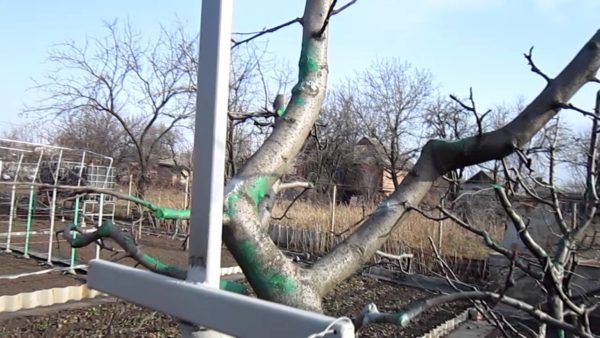
Use of fertilizers
The gardener conducts preventive treatment of trees in the garden not only with iron sulfate, but also with iron chelate. This is a fertilizer that is used to treat and prevent the non-infectious type of chlorosis. The effectiveness is due to the increased content of divalent iron in the fertilizer. The cells of a plant are the easiest to digest. The dosage and recipe is as follows:
- 2 l of water;
- 5 g of citric acid;
- mix the 2 listed components in a separate container;
- pour 2 l of warm water into a separate container;
- add there 8 g of iron sulfate;
- to stir thoroughly;
- liquid with dissolved sulfate is mixed with water in which citric acid is dissolved.
The final stage - the resulting solution is diluted with 1 liter of pure water. The gardener will receive 5 liters of fertilizer with an active substance concentration of 0.5%.
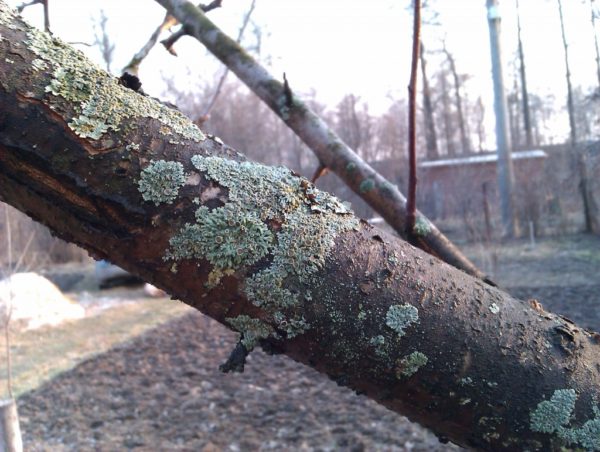
Safety precautions
The gardener puts on goggles and a suit before spraying the trees in spring and autumn with iron sulfate. Other TB rules are as follows:
- processing is carried out in rubber gloves;
- it is forbidden to mix vitriol with lime;
- if the solution gets on the skin, the area is washed extensively with water;
- the substance is stored away from kitchen utensils;
- immediately before the onset of cold weather, vitriol is used for disinfection.
When dry, crystals or powder are stored in a dark place. There should be no sources of moisture nearby.
Compatibility with other substances
The combination of iron sulfate with substances that contain lime or alkali is not allowed. Otherwise, a neutralization reaction takes place. The second rule - iron sulfate is not mixed with fungicides.
Rules for the processing of green spaces
Processing decorative, stone and fruit trees carried out taking into account the recommended concentration level.
| Scope of application | Concentration | Recommendations |
| Winter hardiness | 1% | The base and trunk are treated with a brush that is dipped in the preparation. |
| Immunity increase | 3% | Processing is carried out before the start of the growing season. |
| Fungal Disease Treatment | 2% | Take 30 g of urea, 50 iron sulphate, 20 g of slaked lime and 10 l of pure water. All are mixed. Trees are sprayed until the first leaves appear. |
| Seasonal Protection Organization | 0,5-1% | The first spraying is carried out in late spring. In the future, adhere to the interval - 1 time every 13 days.Last spraying is mid-June. |
| Fertilizer application | 0,5% | The gardener uses iron sulfate to treat trees and soil in spring and autumn with a lack of iron. For therapeutic purposes, the treatment is carried out 3 times a week for 45 days. For prevention, 1 treatment every 10 days for 1 month is enough. Dosage level - 2 teaspoons per 1 bucket of water. |
| In everyday life (beginning of autumn) | 1-6% | The substance is applied to the surface using a brush or spray. Over the next 12 hours, the room is ventilated. |
| 15% | Eliminate fungus in the greenhouse will help 2-3 spraying. Spend them at the beginning and middle of the growing season. |
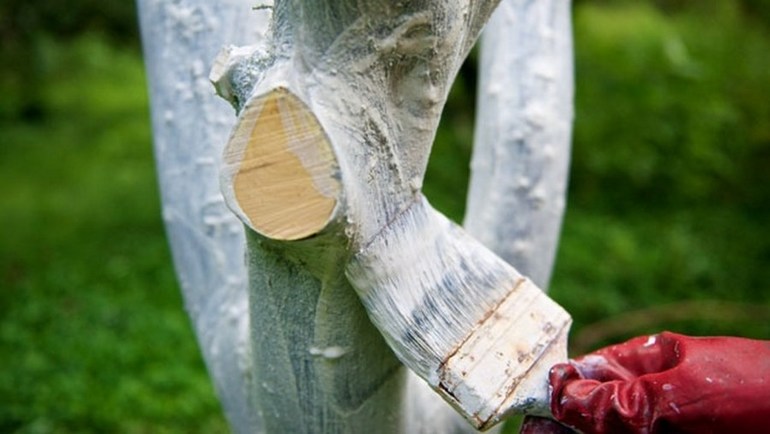 You may be interested in:
You may be interested in:Punctuality is the key to success
There is no universal time frame for spraying. The summer resident is repelled by climatic features of the region. Residents of the middle lane perform manipulation 2 weeks before the onset of cold weather. The second condition is to wait until all leaves fall. In the southern regions there are no restrictions. In the fall, preventive treatment is performed at the end of November, and in the spring, after stabilization of the temperature background.
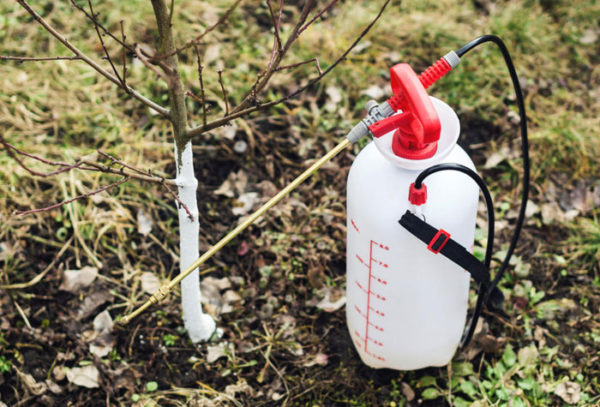
Reviews
Antonina
I process seed crops with an increased dose. Take a 5% solution of vitriol. In a bucket in which about 10 liters of water, add 600 g of substance. Stir thoroughly. Pour the mixture into the spray gun. Gently spray the trunk. I’m walking through the branches with a brush. As a result of treating trees with iron sulfate in the fall, I protect the garden from diseases and pests.
Dmitry
In the southern region, spraying is carried out in mid-November. The time when the leaves have fallen is suitable for the treatment and prevention of diseases. If we are talking about an old tree, then before spraying, carefully remove the lichen. A soft toothbrush helps in this.
Vladimir
I process trees on the site before the start of winter. I prefer whitewashing. Gently brush with a brush along the trunk and branches. You need to act carefully so as not to drip on the leaves. The second precaution - I bring in fertilizer based on iron sulfate in the trunk circle. After 2 treatments in early September and mid-October, I am not worried about pests or diseases.
Iron sulfate is a substance that is sold in hardware stores. The package contains up to 250 g of crystals or powder. Dilute it with water in strict compliance with the recommended concentration level. If exceeded, the tree will receive a burn. The second rule - do not allow the solution to get on the skin and leaves. The solution is prepared immediately before use, and then discarded. After a few hours, the mixture loses its properties.

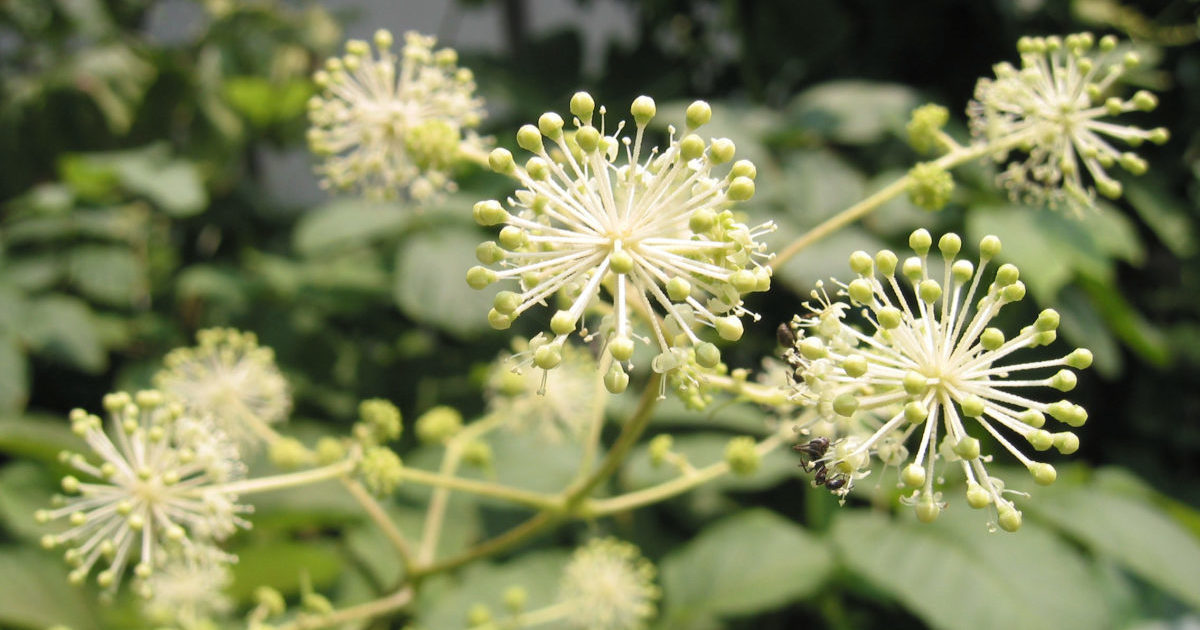 Aralia Manchurian - medicinal properties and contraindications, the use of tinctures in bodybuilding
Aralia Manchurian - medicinal properties and contraindications, the use of tinctures in bodybuilding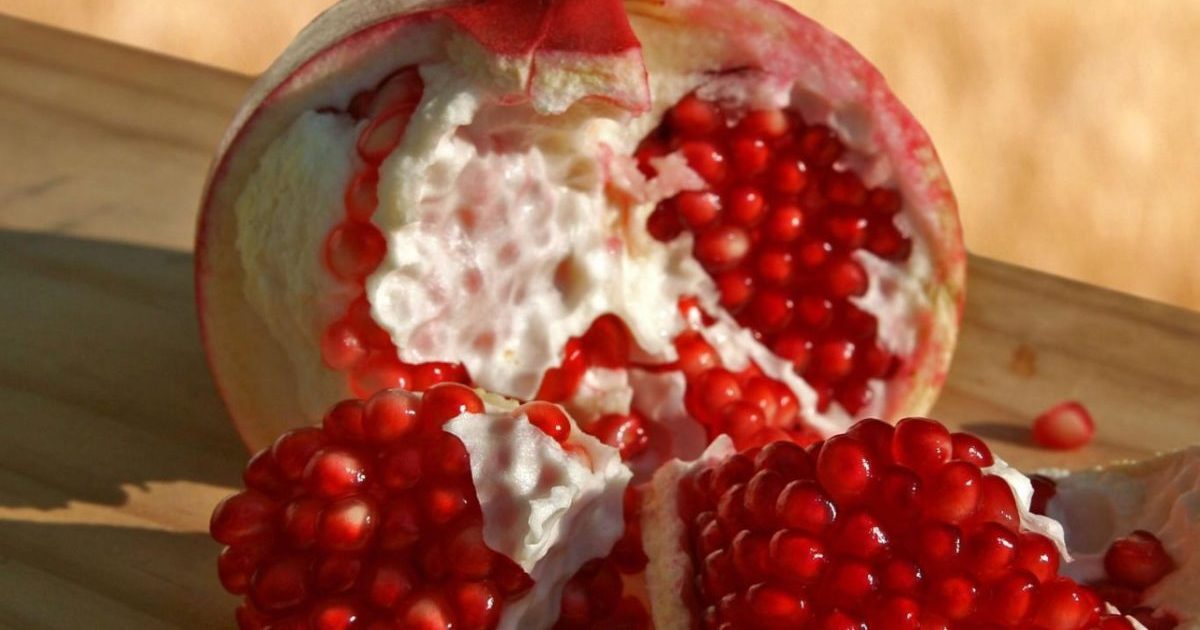 Seedless pomegranate - cutaway appearance, benefits and harms
Seedless pomegranate - cutaway appearance, benefits and harms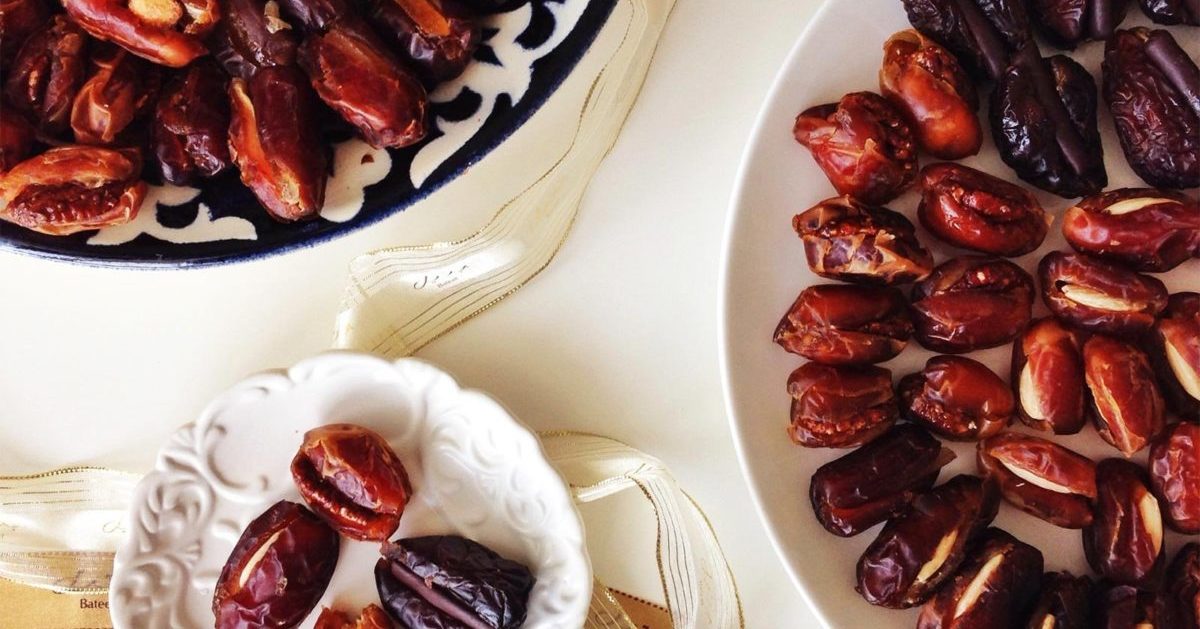 Dates - the benefits and harm to the body, how much you need to eat, properties and calorie content
Dates - the benefits and harm to the body, how much you need to eat, properties and calorie content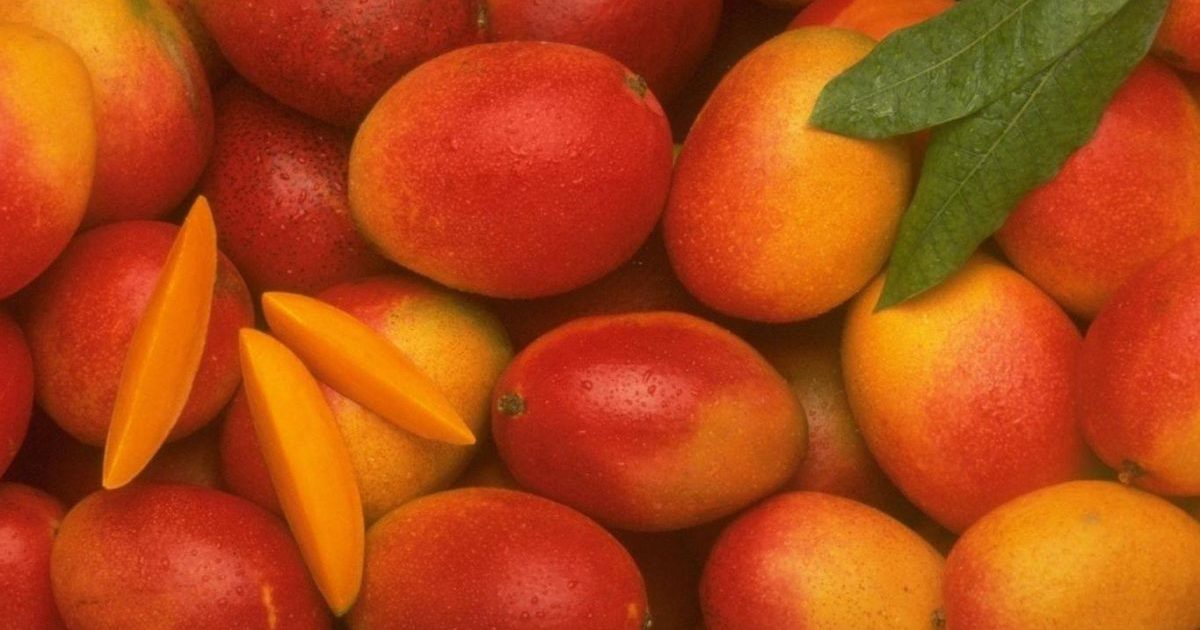 The benefits and harms of mango for the body of women and men - how to eat it?
The benefits and harms of mango for the body of women and men - how to eat it?